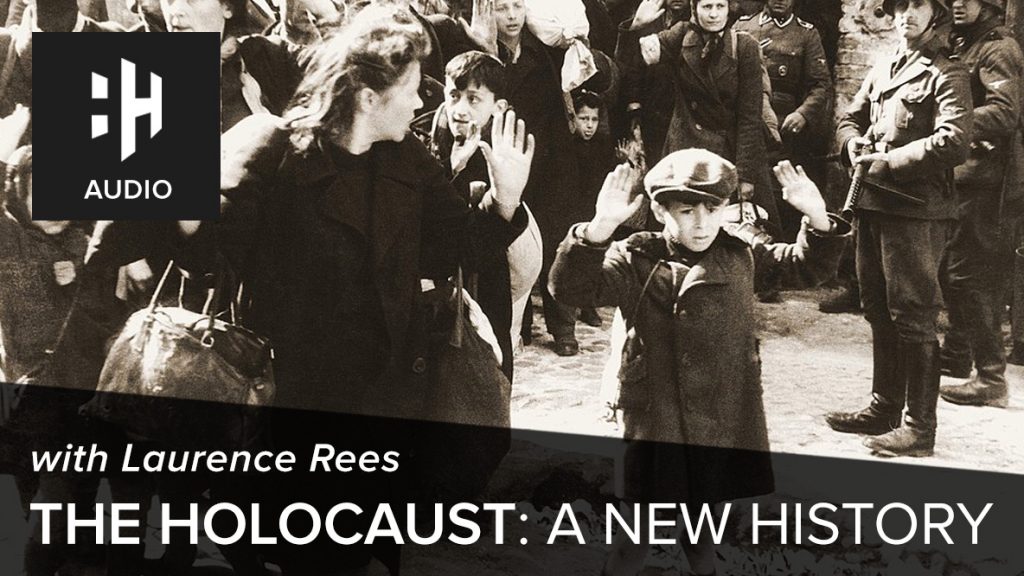
Under Nazi rule, which lasted from 30 January 1933 until 2 May 1945, Jews in Germany suffered extensively. What began with official and state-encouraged discrimination and prosecution, developed into an unprecedented policy of industrialised mass murder.
Background
Prior to the Nazi’s rise to power, Jewish history in Germany had been chequered with alternating periods of success and victimisation. Stretches of relative tolerance by those in power allowed the community to prosper and caused its numbers to grow with immigration — often due to mistreatment in other parts of Europe. Conversely, events like the Crusades, various pogroms and massacres, resulted in exodus to more accepting territories.
 Watch Now
Watch NowAs the quintessential ‘other’ in central Europe, many tragedies were arbitrarily blamed on the Jewish community. Events as disparate as the Black Death and the Mongol Invasion were somehow attributed to a nefarious Jewish influence.
While some nationalist political movements in the 19th century typically vilified Jews, from the latter half of the 1800s until the rise of National Socialism, the Jewish community enjoyed at least nominal equality with Germany’s majority populace, though practical experience often revealed a different story.
The rise of the Nazis

10 March 1933, ‘I will never again complain to the police’. A Jewish lawyer marched barefoot through the streets of Munich by the SS.
Anti-Semitic feelings and actions amongst high ranks in military and civil society in the early 20th century would pave the way for Hitler’s ascendance. At the Nazi Party’s first official meeting, a 25-point plan for the segregation and complete civil, political and legal disenfranchisement of the Jewish people was unveiled.
When Hitler became Reich Chancellor on 30 January 1933 he wasted no time in beginning the Nazi plan of ridding Germany of the Jews. This began with a campaign of boycotts against Jewish-owned businesses, facilitated by the muscle of the SA stormtroopers.
Anti-semitic legislation
The Reichstag passed a series of anti-Jewish laws, starting with the Law for the Restoration of the Professional Civil Service on 7 April 1933, which took employment rights from Jewish public servants and reserved state employment for ‘Aryans’.
What followed was a systematic legal assault on human rights, including forbidding Jews from sitting university exams and prohibiting the owning of anything from typewriters to pets, bicycles and precious metals. 1935’s ‘Nuremberg Laws’ defined who was German and who was a Jew. They stripped Jews of citizenship and forbade them to marry Aryans.
All in all the Nazi regime enacted some 2,000 anti-Jewish decrees, effectively prohibiting Jews from taking part in all facets of public and private life, from work to entertainment to education.
In retaliation against a Jewish gunman shooting two German officials for the mistreatment of his parents, the SS organised Kristallnacht on 9 – 10 November 1938. Synagogues, Jewish businesses and homes were vandalised and burned. 91 Jews were killed in the violence and 30,000 were arrested and subsequently sent to newly built concentration camps.
 Listen Now
Listen NowHitler held the Jews morally and financially responsible for the damage inflicted on Kristallnacht. To avoid this kind of treatment, hundreds of thousands of Jews emigrated, mainly to Palestine and the United States, but also to Western European countries like France, Belgium, Holland and the UK.
By the start of the Second World War, nearly half of Germany’s Jewish population had left the country.
Capture and genocide
With the annexation of Austria in 1938, followed by the launch of the war in 1939, Hitler’s plan for dealing with Jews changed gears. War made immigration especially difficult and the policy turned towards rounding up Jews in Germany and conquered territories like Austria, Czechoslovakia and Poland, and placing them in slums and later concentration camps, where they were used as slave labour.
SS groups called Einsatzgruppen, or ‘task forces’ carried out mass killings though the shooting of Jews in conquered territories.
Prior to the United States’ entry into the war, Hitler considered German and Austrian Jews to be hostages. Their removal to Poland prompted the extermination of Polish Jews already imprisoned in the camps. In 1941 the construction of special mechanised death camps began.
 Listen Now
Listen NowThe Final Solution
When the US entered the war, Hitler no longer saw German Jews as holding any bargaining power. He changed his plan again in order to fully realise his vision of a Judenfrei Europe. Now all European Jews would be deported to the death camps in the East for extermination.
The collective result of the Nazi’s plan to rid Europe of all Jews is known as the Holocaust, which culminated in the killing of some 6 million Jews, as well as 2-3 million Soviet POWs, 2 million ethnic Poles, up to 220,000 Romani and 270,000 disabled Germans.














